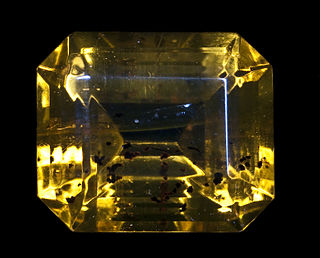 W
WAn organic mineral is an organic compound in mineral form. An organic compound is any compound containing carbon, aside from some simple ones discovered before 1828. There are three classes of organic mineral: hydrocarbons, salts of organic acids, and miscellaneous. Organic minerals are rare, and tend to have specialized settings such as fossilized cacti and bat guano. Mineralogists have used statistical models to predict that there are more undiscovered organic mineral species than known ones.
 W
WAbelsonite is a nickel porphyrin mineral with chemical formula C31H32N4Ni. It was discovered in 1969 in the U.S. State of Utah and described in 1975. The mineral is named after geochemist Philip H. Abelson. It is the only known crystalline geoporphyrin.
 W
WAlginite is a component of some types of kerogen alongside amorphous organic matter. Alginite consists of organic-walled marine microfossils, distinct from inorganic (silica)-walled microfossils that comprise diatomaceous earth.
 W
WAnthracite, also known as hard coal, is a hard, compact variety of coal that has a submetallic luster. It has the highest carbon content, the fewest impurities, and the highest energy density of all types of coal and is the highest ranking of coals.
 W
WCarpathite is a very rare hydrocarbon mineral, consisting of exceptionally pure coronene (C24H12), a polycyclic aromatic hydrocarbon. The name has been spelled karpatite and the mineral was improperly renamed pendletonite.
 W
WChanabayaite is the first recognized triazolate mineral, having the formula Cu2(N3C2H2Cl 4.
 W
WChibaite is a rare silicate mineral. It is a silica clathrate with formula SIO2•n(CH4,C2H6,C3H8,i-C4H10). The mineral is cubic and the silica hosts or traps various hydrocarbon molecules, such as methane, ethane, propane and isobutane.
 W
WEarlandite, [Ca3(C6H5O7)2(H2O)2]·2H2O, is the mineral form of calcium citrate tetrahydrate. It was first reported in 1936 and named after the English microscopist and oceanographer Arthur Earland FRSE. Earlandite occurs as warty fine-grained nodules ca. 1 mm in size in bottom sediments of the Weddell Sea, off Antarctica. Its crystal symmetry was first assigned as orthorhombic, then as monoclinic, and finally as triclinic.
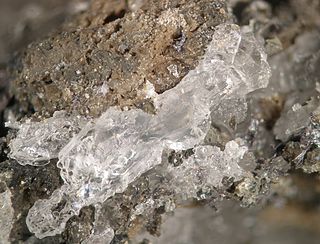 W
WEvenkite is a rare hydrocarbon mineral with formula C24H50; specifically, H3C–(CH2)22–CH3, the alkane n-tetracosane. It occurs as very soft (Mohs hardness 1) transparent crystals, colorless to yellow, with a waxy luster. The softness is a characteristic of crystalline long-chain alkanes, which are the main constituents of paraffin wax.
 W
WFichtelite is a rare white mineral found in fossilized wood from Bavaria. It crystallizes in the monoclinic crystal system. It is a cyclic hydrocarbon: dimethyl-isopropyl-perhydrophenanthrene, C19H34. It is very soft with a Mohs hardness of 1, the same as talc. Its specific gravity is very low at 1.032, just slightly denser than water.
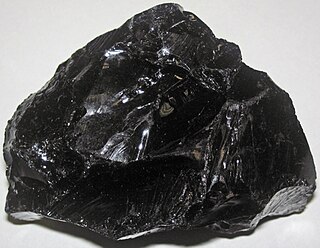 W
WGilsonite is a naturally occurring soluble solid hydrocarbon, a form of asphalt with a relatively high melting temperature. Its large-scale production occurs in the Uintah Basin of Utah and Colorado, United States. Although the substance has been historically mined in the Uintah Basin, resources are being discovered and mined more recently in other countries such as Colombia and Iran. Gilsonite is mined in underground shafts and resembles shiny black obsidian. Discovered in the 1860s, it was first marketed as a lacquer, electrical insulator, and waterproofing compound approximately 25 years later by Samuel H. Gilson.
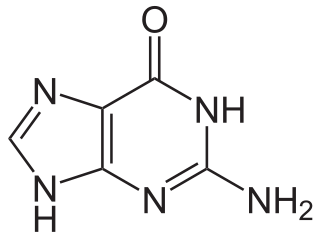 W
WGuanine is one of the four main nucleobases found in the nucleic acids DNA and RNA, the others being adenine, cytosine, and thymine. In DNA, guanine is paired with cytosine. The guanine nucleoside is called guanosine.
 W
WHoelite is a mineral, discovered in 1922 at Mt. Pyramide, Spitsbergen, Norway and named after Norwegian geologist Adolf Hoel (1879–1964). Its chemical formula is C14H8O2 (9,10-anthraquinone).
 W
WIdrialite is a rare hydrocarbon mineral with approximate chemical formula C22H14.
 W
WJoanneumite, confirmed as a new mineral in 2012, is the first recognized isocyanurate mineral, with the formula Cu(C3N3O3H2)2(NH3)2. It is also an ammine-containing mineral, a feature shared with ammineite, chanabayaite and shilovite. All the minerals are very rare and were found in a guano deposit in Pabellón de Pica, Chile.
 W
WLignite, often referred to as brown coal, is a soft, brown, combustible, sedimentary rock formed from naturally compressed peat. It is considered the lowest rank of coal due to its relatively low heat content. It has a carbon content around 25 to 35 percent. It is mined all around the world and is used almost exclusively as a fuel for steam-electric power generation. Lignite is the most harmful coal to human health.
 W
WMellite, also called honeystone, is an unusual mineral being also an organic chemical. It is chemically identified as an aluminium salt of mellitic acid, and specifically as aluminium benzene hexacarboxylate hydrate, with the chemical formula Al2C6(COO)6·16H2O.
 W
WRaphides are needle-shaped crystals of calcium oxalate monohydrate or calcium carbonate as aragonite, found in more than 200 families of plants. Both ends are needle-like, but raphides tend to be blunt at one end and sharp at the other.
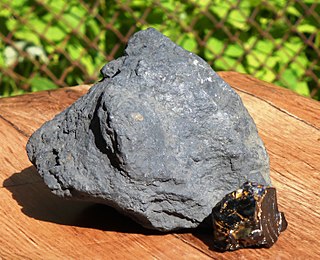 W
WShungite is a black, lustrous, non-crystalline mineraloid consisting of more than 98 weight percent of carbon. It was first described from a deposit near Shunga village, in Karelia, Russia, from where it gets its name. Shungite has been reported to contain trace amounts of fullerenes.
 W
WSimonellite (1,1-dimethyl-1,2,3,4-tetrahydro-7-isopropyl phenanthrene) is a polycyclic aromatic hydrocarbon with a chemical formula C19H24. It is similar to retene.
 W
WTriazolite is an organic mineral with the chemical structure of NaCu2(N3C2H2)2(NH3)2Cl3·4H2O, and is formed in conjunction with chanabayite, another natural triazolate. Triazolite has only been found in Pabellón de Pica, Chanabaya, Iquique Province, Tarapacá Region, Chile, due to its specific requirements for formation. The first specimens of triazolite were found in what is suspected to be the guano of the Guanay cormorant. The guano reacted to chalcopyrite-bearing gabbro, allowing the formation for triazolite to take place. Triazolite was initially grouped together with chanabayite in 2015, and wasn't identified as a separate mineral until 2017.
 W
WXylit is a waste reclamation obtained all around the world from the mining of lignite.